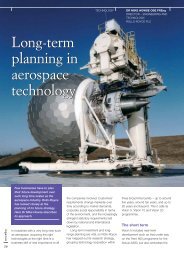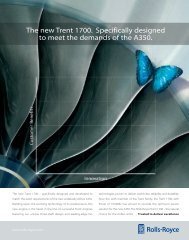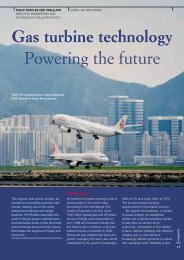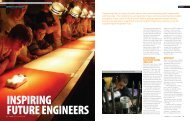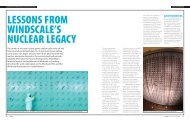Engineering ethics Engineering ethics - Ingenia
Engineering ethics Engineering ethics - Ingenia
Engineering ethics Engineering ethics - Ingenia
Create successful ePaper yourself
Turn your PDF publications into a flip-book with our unique Google optimized e-Paper software.
PROFESSIONAL ISSUES<br />
ingenia<br />
50<br />
system has been set up for the Rail<br />
Industry, initiated by the University of<br />
Strathclyde and subsequently adopted<br />
across the whole network as a result of<br />
government initiatives and public<br />
enquiries. In the wake of the highly<br />
publicised Ladbroke Grove accident in<br />
October 1999, the Confidential Incident<br />
Reporting and Analysis System (CRIAS)<br />
was regarded as a crucial element in the<br />
maintenance of safety on the railways<br />
and of regaining public confidence.<br />
Although the system is now well<br />
established there is, as yet, no indication<br />
of a measurable affect on statistical<br />
trends in the incidence of accidents.<br />
Indeed, the nature of confidential<br />
reporting systems is such that they are<br />
unlikely to prove an appropriate vehicle<br />
for dealing with major shortcomings in<br />
design or management.<br />
At a different level, SCOSS itself<br />
welcomes warnings from engineers<br />
relating to long-term dangers, which it<br />
may pursue. However, where an<br />
engineer becomes aware of facts which<br />
might lead to imminent disaster there is<br />
little alternative to the more direct<br />
procedure discussed above and<br />
illustrated by the examples quoted from<br />
the paper by Dr Hambly.<br />
Amicus action by<br />
Institutions<br />
Given the difficulties faced by individual<br />
engineers in regard to disclosure, it is to<br />
be expected that the Institutions will<br />
A confidential reporting system has been set up for the rail industry, initiated by<br />
the University of Strathclyde and subsequently adopted across the whole<br />
network as a result of government initiatives and public enquiries<br />
themselves consider action in support<br />
of engineers who do publish warnings.<br />
As a result of pioneering activities within<br />
the <strong>ethics</strong> movement in the USA, it<br />
seems that such action is available in<br />
the form of amicus curiae or<br />
intervention proceedings in an existing<br />
court action relating to the issue. The<br />
existing action has usually comprised<br />
action by the engineer following<br />
dismissal, but it might also involve<br />
proceedings against the engineer, as<br />
already discussed, to restrain<br />
disclosure. The purpose of amicus or<br />
intervention proceedings is to afford to<br />
the Institution, or other appropriate<br />
body, the opportunity of placing<br />
material before a Court, which supports<br />
the actions of the engineer and upholds<br />
the public interest.<br />
Amicus curiae means literally a<br />
‘friend of the Court’. Historically, this<br />
title referred to those individuals and<br />
entities who were independent of the<br />
parties and who provided advice and<br />
information to the Court in particular<br />
cases. In England, the Courts have<br />
retained this more traditional notion of<br />
amicus curiae and in most cases<br />
restrict amicus submissions to those<br />
requested by the Court, although the<br />
request may be at the instigation of one<br />
of the parties. A Guidance<br />
Memorandum has recently been issued<br />
by the Attorney General and the Lord<br />
Chief Justice on requests for the<br />
appointment of what is now (since the<br />
abolition of Court Latin) renamed an<br />
‘Advocate of the Court’. 16 Since the<br />
original term remains more generally<br />
understood, it will be retained here.<br />
Frequently, the Court requests an<br />
amicus curiae to advise on an issue of<br />
law but, of particular relevance to this<br />
article, it may also request information<br />
on issues of fact and expertise. 17<br />
English Courts also have the discretion<br />
to permit additional parties to<br />
‘intervene’ in litigation where they<br />
demonstrate a sufficient interest in the<br />
proceedings but these parties are not<br />
considered amicus curiae. 18 It may be<br />
noted that the term ‘intervener’ and<br />
‘amicus curiae’, are beginning to fuse in<br />
other jurisdictions with the growth of<br />
outside intervention in litigation.<br />
One of the earliest examples of<br />
intervention or amicus curiae in the field<br />
of engineering occurred in the<br />
celebrated case of Holger Hjortsvang v<br />
San Francisco Bay Area Rapid Transit<br />
District, 19 brought in the State Court of<br />
California. The US Institute of Electrical<br />
and Electronics Engineers (IEEE) was<br />
granted leave to file an amicus brief on<br />
behalf of three engineers who were<br />
sacked for ‘whistle blowing’. The plaintiff,<br />
with two colleagues, had expressed



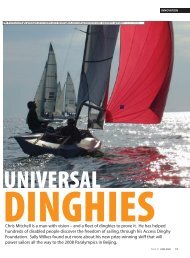

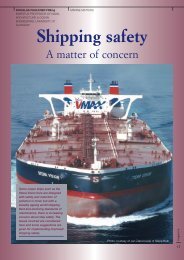
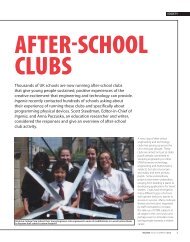
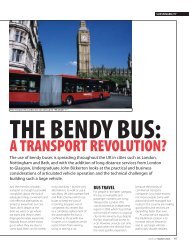
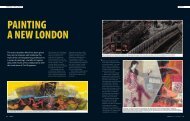
![[322/03] Francke - Ingenia](https://img.yumpu.com/23411337/1/184x260/322-03-francke-ingenia.jpg?quality=85)

